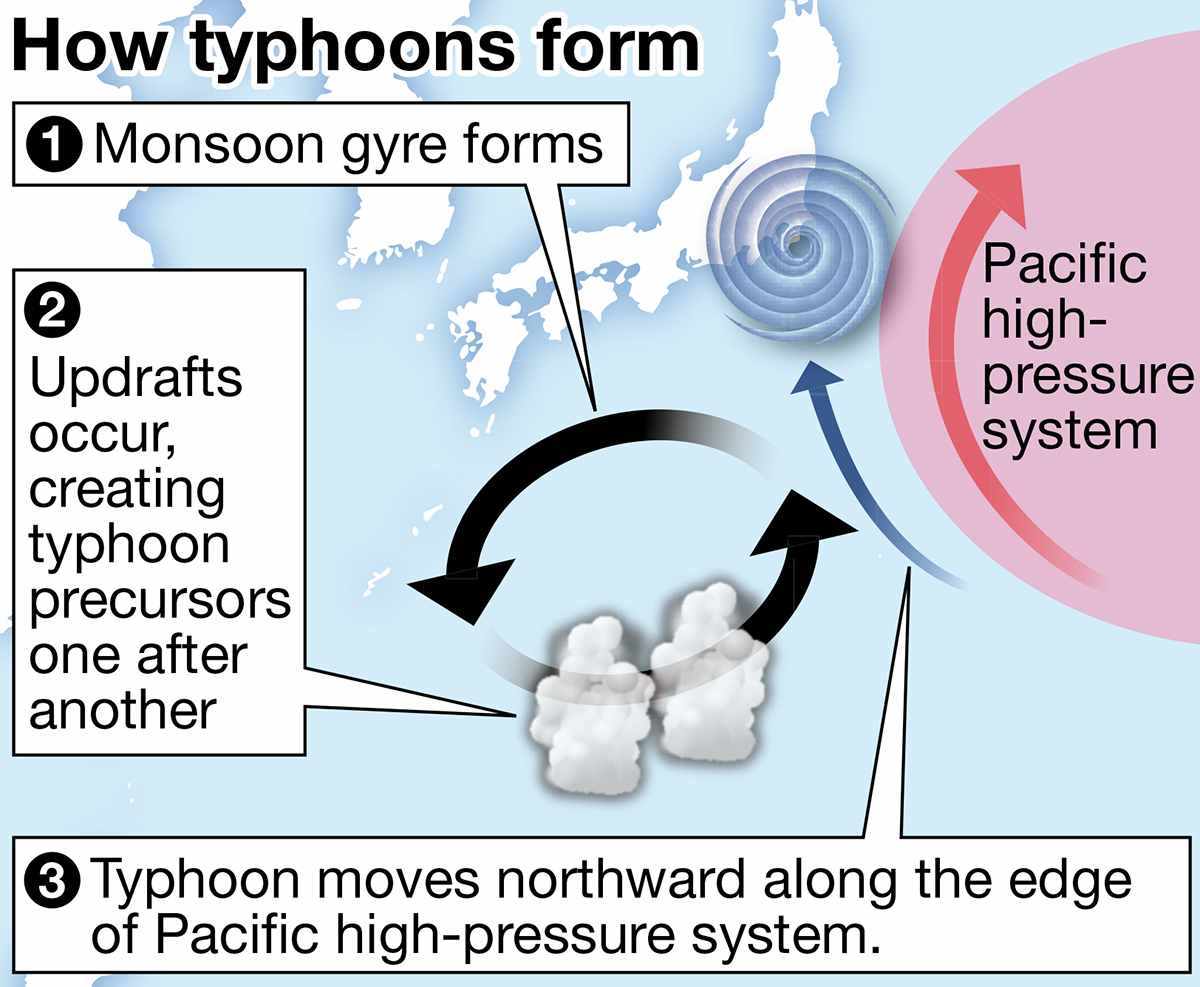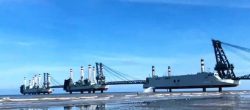Typhoon Precursors Form in Succession Over Japan’s Southern Sea; Situation Unlikely to Change Soon

16:55 JST, August 16, 2024
Four typhoons including the current Typhoon Ampil — also known as Typhoon No. 7 — formed one after another over the sea south of Japan between Aug. 8 and Tuesday.
According to the Japan Meteorological Agency (JMA), the presence of a low-pressure atmospheric vortex — called a monsoon gyre — has increased the likelihood that typhoons will form.
A high-pressure system in the Pacific is currently far to the east over the sea south of Japan, and a nearby low-pressure system is expanding, bringing with it anticlockwise wind circulation, which can easily create updrafts. Accordingly, clusters of cumulonimbus clouds, the precursors of typhoons, are forming one after another.
Additionally, sea surface temperatures in the area this year are about 2 C higher than normal, a situation that is adding a large amount of water vapor to the air. This is another condition that is ripe for typhoons.
Nagoya University Prof. Kazuhisa Tsuboki, who studies typhoons, spoke about the cause of this consecutive development of cumulonimbus clouds: “There have been few typhoons so far this year, and the sea had not been stirred up until recently.”
Typhoon Ampil moved northward along the edge of the high-pressure system in the Pacific. JMA said that the typhoon-prone conditions are not expected to go away any time soon and the agency would keep monitoring the development of subsequent typhoons.

Powerful Typhoon Ampil Approaches Chiba Prefecture; Regional Train, Ferry Services Halted or Reduced
Related Tags
"Society" POPULAR ARTICLE
-

Tokyo Zoo Wolf Believed to Have Used Vegetation Growing on Wall to Climb, Escape; Animal Living Happily after Recapture
-

M4.9 Earthquake Hits Tokyo, Neighboring Prefectures
-

Israeli Tourists Refused Accommodation at Hotel in Japan’s Nagano Pref., Prompting Protest by Israeli Embassy and Probe by Prefecture
-

Tsukiji Market Urges Tourists to Avoid Visiting in Year-End
-

Snow Expected in Tokyo, Neighboring Prefectures from Jan. 2 Afternoon to Jan. 3; 5-Centimeter Snow Fall Expected in Hakone, Tama, and Chichibu Areas
JN ACCESS RANKING
-

As Chinese Tourists Shun Japan, Hotels and Stores Suffer
-

Tokyo Economic Security Forum to Hold Inaugural Meeting Amid Tense Global Environment
-

Osaka-Kansai Expo’s Economic Impact Estimated at ¥3.6 Trillion, Takes Actual Visitor Numbers into Account
-

Economic Security Panels Debate Supply Chains, Rare Earths; Participants Emphasize Importance of Cooperation Among Allies
-

Japan, U.S. Start Talks on Tokyo’s $550 Bil. Investment in U.S.; Energy, AI Projects Were Focus of 1st Meeting
























